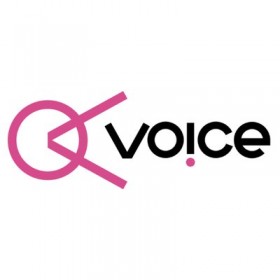You might be aware that employers are obligated to put reasonable adjustments in place to allow disabled employees to do their job. However, did you know that between 70-80% of disabilities are not visible.
But what are hidden disabilities? Quite simply, they’re disabilities that are not immediately visible. There are a wide range of hidden disabilities for example; Crohn's disease, chronic fatigue syndrome, mental health conditions such as PTSD, hearing and visual impairments, speech impairments and neurodiversity.
The key issue with hidden disabilities is that the lack of visibility means people may face disbelief and a lack of support. In many ways this is understandable as our constant representation of disability is a silhouette of someone in a wheelchair. As people with a disability don’t want to face prejudice they may not disclose their disability, and hidden disabilities continue to be swept under the rug.
I have a hidden disability of epilepsy due to being dangerously ill with meningitis at the age of 18. While I am lucky enough that it is fairly well-medicated it still affects me. In one role I disclosed it to my employer in two of my interviews as well as when beginning my position to ensure that they would be able to give me the support I needed. Unfortunately they didn’t take it seriously, and I eventually left the role.
Frequently, individuals have developed coping mechanisms for their disabilities, which may lead others to assume that the disability has minimal impact on their daily life.
For example someone with a hearing impairment may seem not to be affected by it, they rarely ask for things to be repeated and participate well in meetings and talks when there are multiple people there. That’s because they have adopted various means to deal with these challenges, for example arriving at meetings early to ensure they have a seat close to the speaker.
Leaving your desk early to go to meetings doesn’t sound like an imposition. However when we look at it in more detail we can see the barriers that people with hidden disabilities face.
Leaving your desk before the rest of your colleagues means finding excuses, potentially leaving tasks incomplete and calls unattended. The anxiety surrounding securing a suitable seat can be overwhelming; missing out on crucial information during essential meetings can lead to significant challenges. What if the guest speaker will be a partner in the company and you miss the new corporate strategy they’ve laid out? You can’t ask your colleagues to go through the whole meeting afterwards – how could you have forgotten the whole talk when you were sitting in it?
Having to concentrate harder to hear what’s being said means that some things may be missed and that retention of all the information is lowered. In subsequent discussions you’ll have to hope that you can take part in conversations without people realising you didn’t hear a lot of the talk.
The primary barrier lies in the absence of support and understanding. Someone with hearing difficulties should be reserved a place where they can best hear the speaker. They should not have to secretly take responsibility for something beyond their control because they haven’t been believed or are frightened of prejudice.
Such a mindset is incredibly challenging to endure; the inability to be candid with managers and colleagues exacerbates the difficulty.
I have developed strategies to help me cope but I am still very anxious when starting new roles. I’m scared that I will have a seizure. Seizures erase my short term memory and I ‘emerge’ without knowing where I am or what I’m doing. This is humiliating enough, let alone when you are just starting a new job and increased anxiety is the largest trigger of seizures. When I start a role this anxiety causes great distraction and means the onboarding process takes longer until I feel safe in the workplace. Despite telling colleagues this I have had some be stunned that I need reminding of a process or be impatient while I am trying to scribble notes to remind myself of things while they are talking.
Of course you wouldn’t see this from looking at me. The people with the biggest drive have found ways to cope without demanding support from others because they cannot rely on it.
This leads us to a chicken and egg situation. When people with a hidden disability are able to function without support and do not disclose their needs, then it gives no incentive to provide reasonable adjustments. Without an example that employers and colleagues can look at they have no way of seeing how a hidden disability can affect someone.
Another cycle that is self-fulfilling is the inability to be assertive with your needs. If your requests for support are seen as excuses to be lazy or inattentive then naturally you would be very reluctant to ask for them. Trying to ‘prove’ a hidden disability amounts to victimising yourself and can be very humiliating, particularly when you are working so hard to be the equal of your workmates as much as you can.
If these requests still aren’t taken seriously then you have “outed” yourself for no good reason, and have to face the possibility of being ostracised by your colleagues for being melodramatic or asking for special treatment.
Obviously not all people will act this way, however as a hidden disability can cause so much difficulty and be a huge barrier then disclosing it or talking about it can make you very vulnerable so a great amount of trust is needed. This can perpetuate the cycle of working ‘in secret’ as you don’t want to risk the judgement of your colleagues and managers.
This can lead to longer-term implications of a huge drop in confidence in the workplace. If you’ve been ostracised or disbelieved and your disability has caused a great deal of anxiety then getting back into the workplace can be incredibly difficult. Consequently people tend to apply for jobs they are overqualified for and also do not perform as well at interviews. They may not seek or in some cases even accept promotion due to anxiety. This means fewer managers with lived experience of hidden disability.
It is worth noting that the anxiety in the workplace comes not just from fear of not performing or of judgement but of safety. I need to ensure my safety in the workplace, if I don’t have an understanding environment I could potentially be in physical danger. And yet this is still hard for people to believe.
The key takeaway here is listening and trust. Workplaces must make sure to listen to employees and their needs. There is naturally concern over what adjustments will be needed and what the costs may be. Due to the entrenched idea of a lack of mobility being the primary form of disability this can conjure up the idea of having to install expensive lifts and ramps. Often hidden disabilities have practical requirements people without lived experience wouldn’t consider and adjustments are rarely as huge an inconvenience as people may imagine.
The largest adjustment that employers can make is simply understanding. If someone tells you they have MS or a gastrointestinal disorder then ask how it affects them when doing their job and what provisions would be most helpful. Ask them. Don’t tell them what provisions you’ll put in place. Don’t hear it once and forget about it, keep it in mind. Ensure the support is consistent. If you don’t notice the effects of a hidden disability it doesn’t make it any less real. It could even mean that your support is working. Check in with employees to see how the support is working and if their needs are being filled.
Checking in is key. An understanding conversation where employees feel they can be open without risking judgement. Hidden disabilities can change. If it is difficult to disclose once it can be harder to talk about any changes because you don’t want to seem like you’re taking advantage. A change for me might mean going on new medication which could temporarily cause more seizures as I get used to the transition – and consequently increase my anxiety.
Adjustments can benefit the whole workplace. Empathy not only creates and fosters trust with all colleagues but some adjustments can be so beneficial that they are adopted by stakeholders up and down the ladder. Working from home during Covid is a great example. This was an adjustment we all had to make which has turned out to be incredibly popular and didn’t have the catastrophic drain on productivity that people imagined prior to the pandemic.
Trust is a two-way street. Employers have to trust that an employee will commit to their role and employees have to trust that they will be kept safe in the workplace and will be able to be honest with their needs without being judged.
There is also a hidden reward for employers. When workers are willing to go to such lengths and endure such anxiety to perform their roles you have someone incredibly committed. Ensuring they have the support to do their job will not only make the workplace a fairer and kinder place, it will pay huge dividends.










Such an important issue. Thank you for a really comprehensive article.